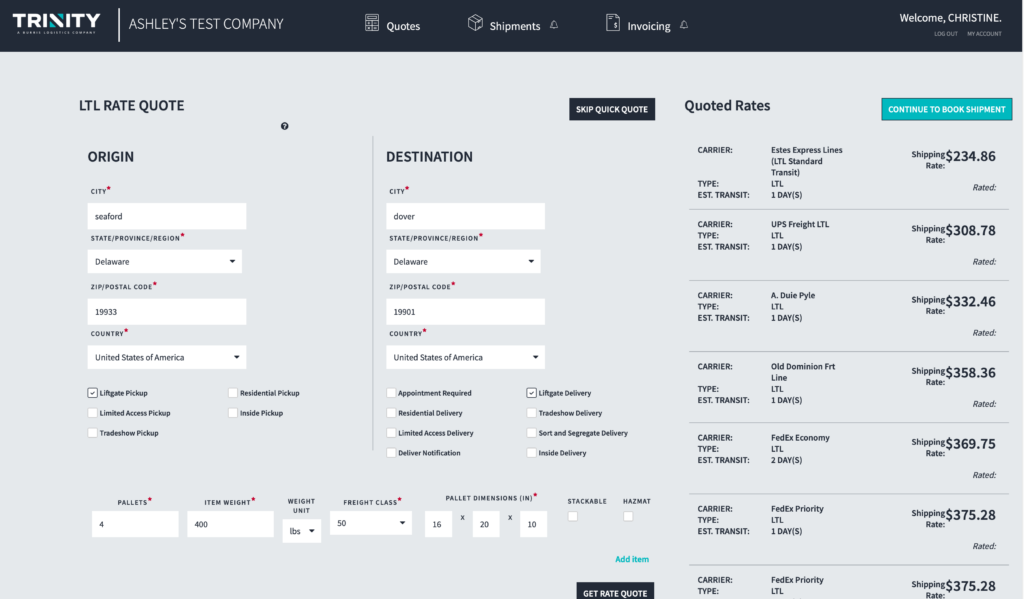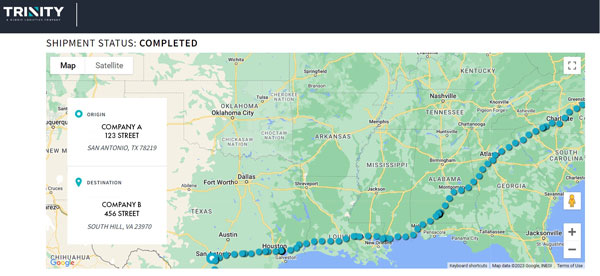
07/12/2023 by Christine Morris
LTL Shipping Myths Debunked
There are some common misconceptions out there about less-than-truckload (LTL) shipping. If you fall victim to any of these LTL shipping myths, you could end up thinking this mode isn’t for your freight. Or worse, spending extra time or money that you could have saved with your LTL shipping.
Here are some of the most popular misunderstandings about LTL shipping and why they’re simply not true.
LTL SHIPPING IS DIFFICULT
Many companies actually find this mode of shipping to be the most flexible and easy to book. As long as you’re working with a quality LTL carrier or third-party logistics (3PL) provider, you’ll find that LTL shipping can be one of the easier modes of transportation to work with.
LTL SHIPPING RATES ARE NON-NEGOTIABLE
Some believe that there’s no room for negotiation when it comes to rates for this mode. In reality, you can negotiate your LTL shipping rates but you’ll need a solid relationship with your carrier to see any benefit. You can also negotiate outside of peak shipping season when companies are more likely to offer lower rates. When you choose to work with Trinity for your LTL, you can trust that our experts negotiate on your behalf to get you the best rate for your specific shipping needs.
ALL LTL ACCESSORIAL FEES ARE THE SAME
In reality, accessorial charges in LTL shipping can fluctuate between carriers by as much as 50 percent.
To determine the accessorial fees charged by a specific carrier, you can look at their rules tariff. This will give you a breakdown of all the accessorials they charge. Some of the most common accessorial charges include liftgates, residential delivery, hazardous material fees, and limited access charges.
One reason these charges vary between carriers is whether they calculate the fee based on cents-per-hundred-pounds or by a flat rate. They can also vary based on different pricing agreements or contracts already in place.
“I’VE BEEN SHIPPING THE SAME FREIGHT FOR YEARS, AND MY CLASS HAS NEVER CHANGED, SO I DON’T HAVE TO WORRY ABOUT IT CHANGING IN THE FUTURE.”
It’s important to always double-check to confirm your freight class hasn’t changed. The National Motor Freight Classification (NMFC) board meets twice a year and revises the freight classes for dozens of different commodities, so there’s always a chance that your freight class could change without warning.
Even if you’ve never had issues with re-classifications in the past, LTL carriers remain strict about having accurate classifications on the bill-of-lading (BOL). Carriers often equip their drivers with tape measures and scanning devices to determine dimensions and double-check your freight’s class.
LTL SHIPPING TIMES ARE GUARANTEED
Unless specified as guaranteed, LTL shipping times are estimates. Due to LTL’s flexible service offerings, carriers cannot truly guarantee specific times.
This means both your pick-up and delivery times are never guaranteed (unless specified). Even with a specified guarantee, there can sometimes be a delay or missed window.
The good news is that you can receive tracking notifications from the carrier, so you know once they have picked up. The same goes for your delivery. You’ll receive an estimated delivery date but should be able to track and trace through your provider and receive any notifications if there’s a delay.
You can check with your LTL carrier or provider if they can offer guaranteed LTL shipping as an additional service – meaning there’s an extra charge for this. In this case, it’s imperative that you list the delivery time clearly on the BOL.
A guaranteed delivery time only takes effect once the shipment is picked up from the shipper’s address, and delays in pick-up will not be factored into that time. Transit time does not include the day of pickup or weekends and holidays. It’s also good to note that added requirements at the delivery location, like delivery appointments, can also void the guarantee.
TEMPERATURE-CONTROLLED SHIPMENTS CAN’T GO WITH LTL SHIPPING
Many businesses assume that freight like produce or ice cream can’t ship via LTL because of their need for temperature control. LTL’s flexibility often gets overlooked. With refrigerated LTL, your temperature-controlled freight will be on the same truck as another customer’s freight that needs a similar temperature range. While there are a limited number of LTL providers that can offer this service, it isn’t true that you can’t use LTL for your temperature-controlled shipments. Refrigerated LTL can be a great way to ship any temperature-controlled goods without having to pay full truckload prices.
WORKING WITH A 3PL FOR LTL SHIPPING ISN’T WORTH IT
This is the common misconception we come across when it comes to LTL shipping. Many companies don’t realize all the benefits that come with using a 3PL for their LTL.
Working with a 3PL like Trinity Logistics gives you the competitive edge of working with an expert in LTL who has a network of strong and trustworthy carrier relationships. What does this mean for you?
Getting LTL shipping quotes and booking shipments with quality LTL carriers is even easier. Especially through Trinity’s Customer Portal, with our LTL Quick Quote feature available. You’ll also have full transparency over your shipment’s transit.


And if your freight is temperature-controlled? No problem. We can help you with any refrigerated LTL shipments.
Additionally, through our relationships with both large and small LTL carriers, we’re able to negotiate accessorial charges and LTL shipping fees to get you the best service at an ideal rate.
Keep in mind, too, that LTL shipping is about more than just rates. If you experience any service failures or frequent lapses in communication with your current LTL provider, switching to a best-in-class 3PL with top-notch People-Centric service such as ours can save you time and money, even if the rates are the same as before.


